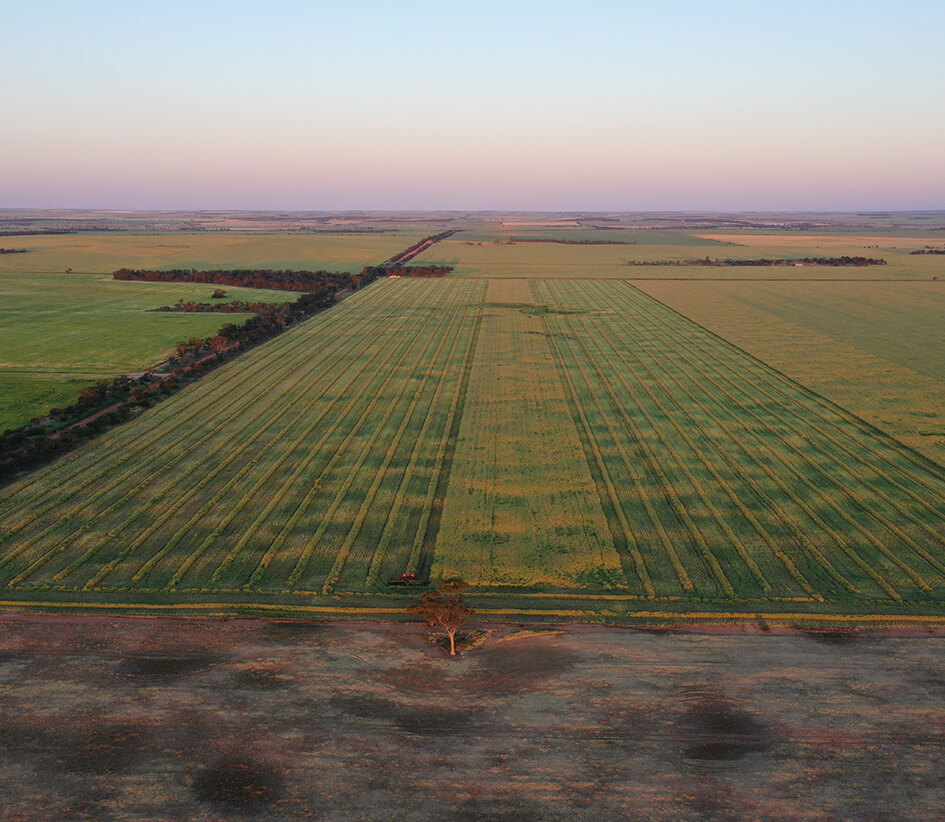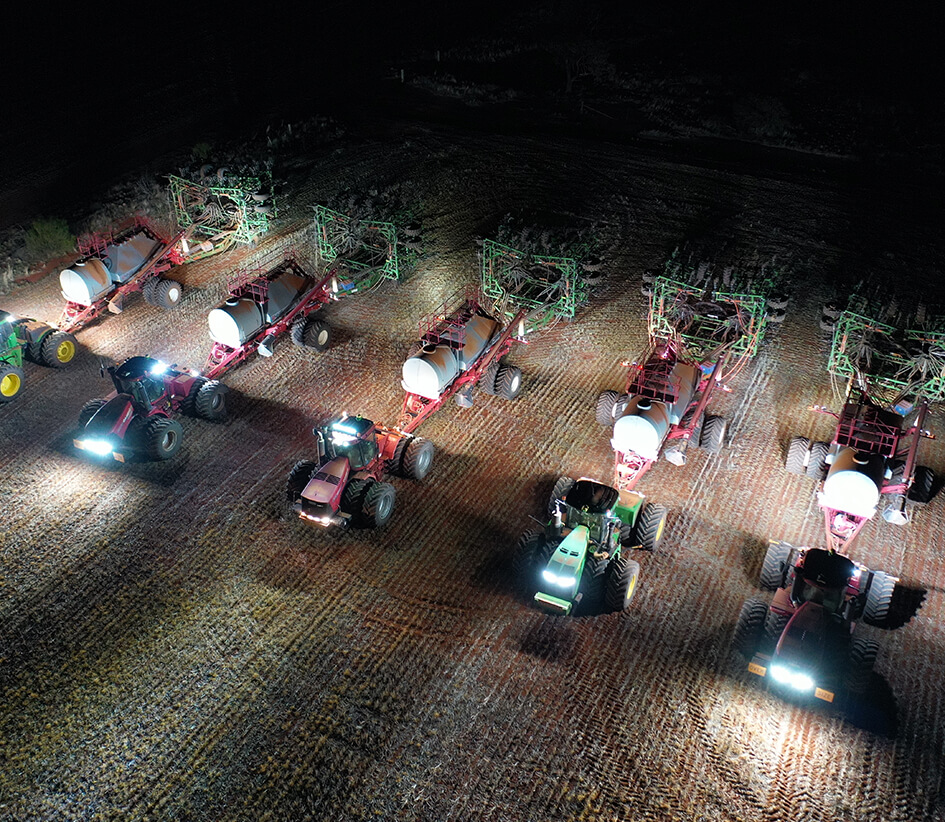This Fund is Currently Closed
Caltha’s Agricultural Property Fund is a differentiated Australian row cropping property fund established by generational agribusiness owners that is focused on achieving risk-adjusted returns from dry land agricultural property investments in Australia.
Key Fund Metrics
The Caltha Agricultural Property Fund has been designed specifically to create an accessible investment opportunity for global investors to invest in the Australian Agricultural industry. Invest alongside leading industry experts who have been on both sides of the investment. Our managers have generational experience in owning and operating properties in numerous capacities.
16.37%
Fund Returns Annualised per annum
35 Years
First Property Purchase 1987
7
Current Holdings
30th June 2023
1.00%
Management Fee
Fund Offering
Access To Australian Agricultural Land In A Low-Risk Environment
Caltha employs a purchase/leaseback model that diminishes direct commodity price and operating risks whilst maintaining ownership of the land and captures stable income and capital growth benefits. Caltha’s focus on dry land farms also eliminates risks related to water availability, diversion for human use, and competition for allocations that hallmark the bulk of agricultural funds.
What kind of agri properties does the fund buy?
The fund buys dry land broadacre row cropping agri properties. These properties are large-scale operations that can grow a variety of cereal and legume crops, wheat, canola, barley, oats, and lupins.
Why does Caltha only lease out the properties and not operate them?
We only lease out the properties to minimise the risks associated with the operation of these types of properties. By being landowners and not participating in operations we are protected from dealing with seasonal weather fluctuations, commodity pricing, depreciating assets, and employee liabilities, whilst capturing the attractive land value growth and lease income.
How long is a typical investment held for?
There is no typical investment holding period. We will seek to hold properties for as long as the Australian agri sector is attractive and we continue to see upside potential in land prices. We maintain an active view of land pricing and the world’s macroeconomic conditions around food supply and demand. We believe this thesis is currently very strong for the coming 10 years.
- Fund Details
- Investment Details
- Performance
- Fees
| Investment Objective | Economy defying capital preservation and growth whilst providing stable income. |
| Fund Manager | Caltha Capital Pty Ltd |
| Minimum Suggested Time Frame | 10 Years or Longer |
| Asset Class | Australian Broadacre Dry Land Cropping Property |
| Distribution Policy | Half-Yearly |
| Borrowing Limit | 0% to 50% Asset Value |
| Who Can Invest | Wholesale Clients By Invitation Only |
| Minimum Initial Investment | $1,000,000 |
| Minimum Additional Investment | $1,000,000 |
| Lock-In Period | 5 Years |
| Minimum Suggested Time Frame | 10 Years or longer |
| Fund Returns | 16.37% p.a |
| Buy / Sell Spread | 0.25% / 0.25% |
| Entry Fee | 0.00 |
| Exit Fee | 0.00 |
| Management Fee | 1.00% |
| Performance Fee | 5.00% |
| Buy / Sell Spread | 0.25% / 0.25% |
Investment Process
Buy & Hold
We actively purchase high-quality agricultural properties throughout Australia and then lease those properties back to industry-leading agribusinesses. This allows our fund to hold large aggregations of land in Australia whilst freeing up capital for agribusinesses to focus and improve their core profit-generating business of producing crops. This allows them to maintain servicing the global food demand increase whilst creating higher yielding and more profitable land that will in turn increase land prices.
Competitive Advantage
Invest Alongside Generational Agri Managers
We are a local team with 5 generations of experience owning and operating the very type of investments the fund invests in. We understand the Australian agri market inside and out and have extensive firsthand experience in the industry. We have owned farms to operate our own agribusinesses on, leased properties from third parties to operate ourselves, sold properties, and owned properties to lease out.

Why Australian Agriculture
A Supply & Demand Story You Need To Hear
Globally arable land per capita is significantly reducing in volume and there is no more land to be found on Earth. The only way to generate an adequate supply to feed the globe and its growing food demand is to increase the yield on current acres in production. To do this, we need to create access to valuable capital amongst farmers to allow them to focus their resources on creating higher yield production per acre.
Global grain production is increasing by an average of 16 million tons per year, whilst grain consumption is increasing by 24 million tonnes per year. The difference between these figures will only grow as we see a compounding effect on the global population and income growth.
Technology
Lower Production Costs Increases Land Prices
The use of technology in agriculture has been rapidly adopted over the last 10 years. Farms are becoming more tech-focused to lower costs, increase yields, and manage efficiency, allowing farms to expand with ease. This is largely driving demand for land, as the younger generation is taking over management roles in the businesses and focusing on profitability with economy of scale.
Armed with a wide array of technology, agribusinesses are becoming more data-driven and focused on improving every area of production. They can now identify weak points in each field and the causes of them. Machines can be set to automatically apply a higher application of resources to fix these issues and improve the overall field yield.

Innovation
Corporatisation and Innovation Increases Profits
Generational family farms are beginning to adopt a corporatised model and moving away from old generational practices. Today we see farms leasing higher percentages of land and becoming focused on their core profit-generating business of grain production.
Livestock are being moved out of the grain-growing areas and farms are adopting 100% fence-to-fence cropping programs, allowing them to scale with minimum labour.
We have also seen an increase in the use of grain genetics allowing higher yields in less favourable growing conditions. Wheat is becoming more frost-resistant and salt-tolerant whilst the use of genetically modified canola has shown great yields and made a return to be a large part of the Australian cropping program.
Returns
Economy-Defying Returns
Agricultural investments have historically shown a positive correlation with inflation. Food prices tend to rise with inflation and agricultural assets can benefit from increased market value. Inflation protection can help preserve the purchasing power of the investment and provide a hedge against the erosion of returns due to rising prices.
Agricultural property investments offer diversification benefits by introducing an asset class that has a low correlation with traditional financial investments like stocks and bonds. Diversification can potentially reduce the overall risk of a portfolio and enhance long-term returns by balancing the performance of different asset types.
-

Craig Sutherland
Executive Director, Asset Manager
Craig is a seasoned professional with over 35 years of experience in the agricultural sector serving as a key figure at Caltha Capital.
Read More -

Daniel Sutherland
Fund Manager
Daniel Sutherland is the Chief Executive Officer and Fund Manager at Caltha Capital, bringing over 10 years of investment industry experience to his leadership role.
Read More
Register Your Interest
Register Your Interest
"*" indicates required fields






